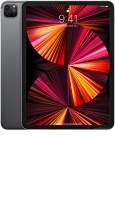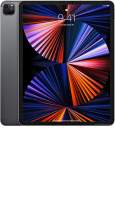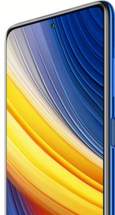By Brand 
- AT&T
- Acer
- Alcatel
- Allview
- Amazon
- Amoi
- Apple
- Archos
- Asus
- BBK
- BLU
- BQ
- BenQ
- BenQ-Siemens
- Benefon
- Bird
- BlackBerry
- Blackview
- Bosch
- Casio
- Cat
- Celkon
- Cheacomm
- Coolpad
- Dell
- DigiFlip
- Ericsson
- Eten
- Fly
- Fujitsu Siemens
- G-Five
- Garmin-Asus
- Geeks phone
- Gigabyte
- Gionee
- HP
- HTC
- Haier
- Huawei
- Icemobile
- Infinix
- Infocus
- Innostream
- Intel
- Intex
- Karbonn
- Kyocera
- LG
- LYF
- Lava
- LeEco
- Lenovo
- MWg
- Maxon
- Maxx
- Meizu
- Micromax
- Microsoft
- Mitac
- Mitsubishi
- Modu
- Motorola
- NEC
- NIU
- Neonode
- Nokia
- O2
- OnePlus
- Oppo
- Orange
- Palm
- Panasonic
- Pantech
- Parla
- Philips
- Plum
- Prestigio
- Qtek
- Razer
- Ringing Bells
- Sagem
- Samsung
- Sanyo
- Sendo
- Sewon
- Sharp
- Siemens
- Sonim
- Sony
- Sony Ericsson
- Spice
- T-Mobile
- TP-Link
- Teclast
- Tecmobile
- Tel Me
- Telit
- Thuraya
- Toshiba
- VK Mobile
- Vertu
- Verykool
- Videocon
- Vivo
- Vodafone
- WND
- Wiko
- Wileyfox
- XCute
- XOLO
- Xiaomi
- Yezz
- ZTE
- Zen
- i-mate
- i-mobile
- iNQ
GSM 2G Bands Overview and Market Availability
Author: GSMScore Team
2G is short for second-generation wireless telephone technology. 2G technologies allow us to make voice calls, send SMS, send MMS (via GPRS), and connect to the internet via GPRS/EDGE. To offer 2G services, a telco must obtain a 2G license and must operate within the GSM frequency band/s allocated by the NTC.
GSM-900 and GSM-1800 are GSM frequency bands used in most parts of the world: Europe, Middle East, Africa, Australia, Oceania (and most of Asia). While GSM-850 and GSM-1900 are used in Argentina, Brazil, Canada, the United States and many other countries in the Americas. In the Philippines, Telcos operate in the GSM-900 or GSM-1800 bands to offer 2G services nationwide.
GSM-1800
frequencies have smaller coverage than GSM-900. As the frequency increases, cell size decreases due to the path loss increase. Hence for a particular area, more number of towers needs to be erected in GSM-1800 than in GSM-900 for full coverage. But because there are more frequencies available on GSM 1800 band, more capacity can be catered for good traffic. This enables GSM 1800 to handle more subscribers than GSM 900.
GSM 900
GSM-900 uses 890–915 MHz to send information from the mobile station to the base station (uplink) and 935–960 MHz for the other direction (downlink). Duplex spacing of 45 MHz is used. GSM-900 has low propagation losses and has double the coverage as compared to GSM-1800. Only 3 telecom operators were given frequency assignments on the GSM 900 bands; Globe, Smart and Islacom.
GSM 1800
GSM-1800 uses 1710–1785 MHz to send information from the mobile station to the base transceiver station (uplink) and 1805–1880 MHz for the other direction (downlink). Duplex spacing is 95 MHz GSM 1800 frequencies can carry more traffic than GSM 900 due to more frequencies available. But GSM-1800 has high propagation losses so more number of sites are required (approx.1.5~2 times that of GSM-900).
available GSM 2G Bands in Market
GSM 2G Bands
Mobile Phone Specifications

Xiaomi Civi 5G
US$ 333 INR₹ 22990

Apple iPad Pro 11 (2021)
US$ 941 INR₹ 64900

Apple iPad Pro 12.9 (2021)
US$ 1448 INR₹ 99900

Apple iPad 10.2 (2021)
US$ 448 INR₹ 30900

Apple iPad Mini 6 (2021)
US$ 680 INR₹ 46900

Samsung Galaxy F42
US$ 217 INR₹ 14999

Samsung Galaxy M52 5G
US$ 319 INR₹ 21990

Huawei Nova 9 Pro
US$ 580 INR₹ 39990

Huawei Nova 9
US$ 448 INR₹ 30890

Apple iPhone 13
US$ 1159 INR₹ 79990

Xiaomi Civi 5G
US$ ∞ INR₹ ∞

Samsung Galaxy M52 5G
US$ ∞ INR₹ ∞

Huawei Nova 9 Pro
US$ ∞ INR₹ ∞

Huawei Nova 9
US$ ∞ INR₹ ∞

Huawei P50 Pro
US$ ∞ INR₹ ∞

OnePlus 9R 5G
US$ $580 INR₹ ₹39999

Motorola Moto G60
US$ $319 INR₹ ₹21999

Samsung Galaxy M32
US$ $217 INR₹ ₹14999

Redmi Note 10S
US$ $217 INR₹ ₹14999

OnePlus Nord 2 5G
US$ $435 INR₹ ₹29999

Samsung Galaxy F62
US$ $290 INR₹ ₹19999

Xiaomi Poco X3 Pro
US$ $275 INR₹ ₹18999

Redmi 11 Ultra
US$ $1014 INR₹ ₹69999






